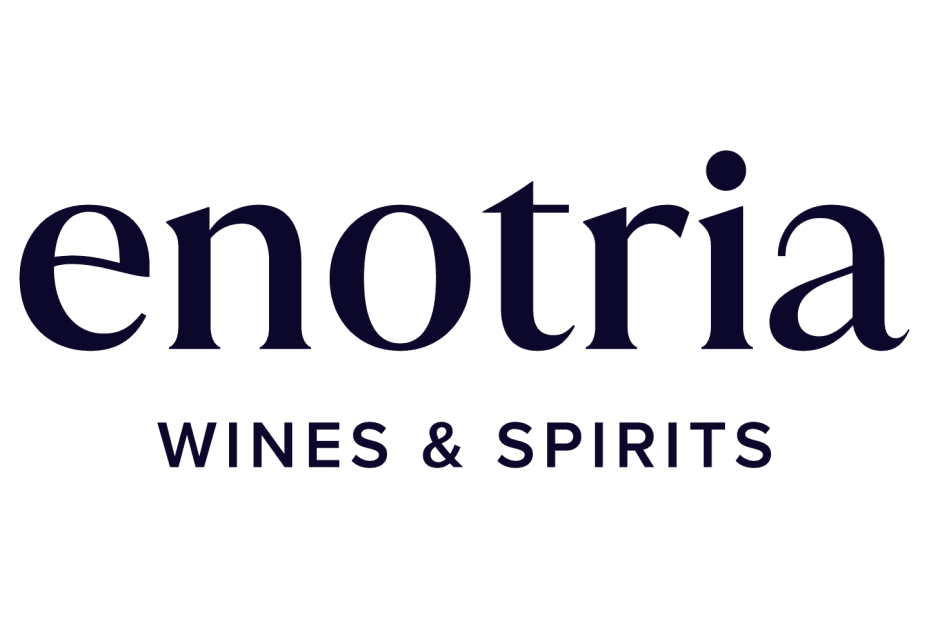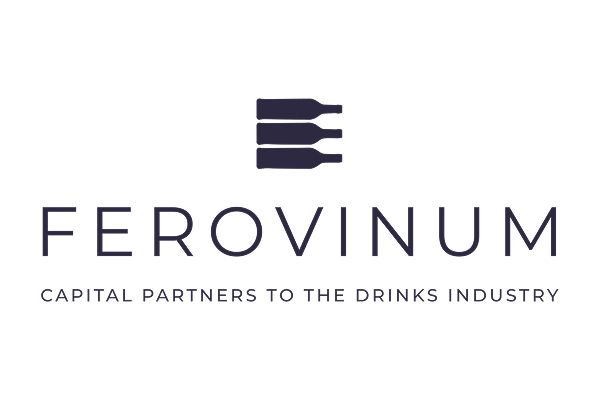Our thanks go to all the producers and buyers that took part in The Buyer New York Pitch project. You can watch the full debate and individual presentations of the wineries involved by clicking on the video link below.
Thanks to all the buyers who took part in the live session:
Corney & Barrow: Rebecca Palmer
Wanderlust Wine: Richard Ellison
Propeller: Corinne O’Connor winemaker
Graft Wine: Miranda Fong
Fine Wines Direct UK: Bastien Martinole
Finding ever more innovative ways to bring producers and buyers together is very much what The Buyer is all about. A platform to help wineries and buyers alike to do business with each other. To help them better understand their businesses, each others needs and how best they can work together.
Which is what made the ‘New York Pitch’ project with the New York Wine Grape Foundation such an exciting event to organise and host. A chance for leading New York State producers, looking to find access to the UK market, to present themselves, and their wines, to a panel of major buyers from across all channels of the UK on and off-trade sectors.
It was also the first time The Buyer had put on an event of this kind and it proved to be a great new platform by which producers could spend 10 minutes each to present themselves as a business, where their vineyards are, the climate conditions they have to work with, the styles of wines they want to produce and then a chance to showcase a couple of wines from their range.
From a buyer’s perspective it allowed them to take a deep dive into a region that many had been interested in for some time, but had not had the opportunity to really explore in this way. In less than two hours they had the chance to meet, hear and taste wines from 8 leading producers all of whom have the credentials, track record and wines to potentially succeed in the UK.
Rebecca Palmer, wine trading director at Corney & Barrow, summed up the event when she said it’s an “incredibly powerful” way for a buyer like her to be able to really explore an area like New York State, when she knows there has been a level of curation gone on beforehand to involve producers that really have what it takes to make it the UK. “These are very useful initiatives in terms of helping us to gain insights in a quick and intensive way.”
Elly Owen, wine director at The Old Garage, agrees: “I was interested to see what was out there, and to get an insight into what styles of wine are being created. The potential for us to be able to taste this way is so beneficial and was able to get the team to taste alongside as well giving them all an in depth insight into the wines as well.
The New York State Producers
The New York State producers taking part in the session included.
Buttonwood Grove Winery: Carmela Barbagallo
Lieb Cellars: Aimee Lasseigne New
Ravines Wine Cellars: Morten Hallgren
Mazza Chautauqua Cellars: Mario Mazza
Hound’s Tree Wines: Alexander Rosanelli
Wagner Vineyards Estate Winery: Alex Jankowski
Four Maples: Erwin Kalmar
Brotherhood Winery: Philip Dunsmore
Producer Pitches
Each of the producers were given the opportunity to shine the light on themselves and in their allocated 10 minutes introduce themselves and their wines.
Buttonwood Grove (Finger Lakes)
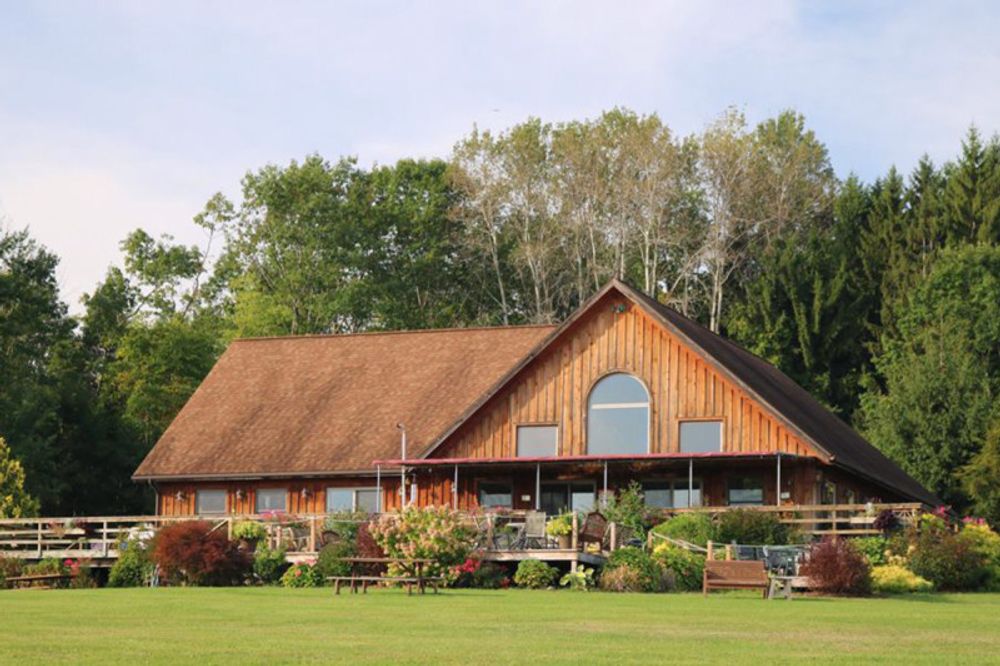
Buttonwood Grove has been able to almost double its production in 2021 to 13,000 cases on the back of a big harvest. Situated on the left side of Fingers Lakes it is one of the region’s prominent Riesling produces and makes a number of different styles, as well as its share of red wines, including Cabernet Franc, Pinot Noir and Cabernet Sauvignon. A family winery it is owned by David and Melissa Pittard who have tripled the number of vines over the seven years they have owned the business. They have also built a successful wine club with over 1,000 members. Winemaker Susan Passmore has been with the business since it first started out. David Pittard actually grew up as a cider farmer before moving into wine. It is now looking to export for the first time.
The two wines tasted at the event were:
US SRP $14-16.99 for the two wines (no FOB as new to export)
Buttonwood Grove Riesling 2019
Buttonwood Grove Dry Riesling 2019
US SRP $14-16.99 for the two wines
Lieb Cellars (Long Island)
Lieb Cellars is situated east of New York city in North Fork of Long Island and enjoys a cool, maritime climate as it is surrounded by so much water both from Long Island Sound and Peconic Bay. It has had the same winemaker, Russell Hearn, an Australian, since it was founded in 1992 and its vineyard manager, Ildo Vasquez, has been with the winery for 20 years. In total it has around 22 hectares from three vineyard sites planted on sandy, loamy soils and are certified sustainable under Long Island Sustainable Winegrowing.
It works with 11 different varieties a quarter of which is Pinot Blanc, including what it claims is the largest Pinot Blanc plot in the US at 5.6 hectares. It produces 4,000 cases a year and has a second label Bridge Lane that is focused on offering wines in alternative packaging, kegs, cans and box. It also runs its own custom crush facility and has a big focus on managing its waste water. It has just started to export to Canada.
Its Pinot Blanc was the focus of the wines presented at the event.
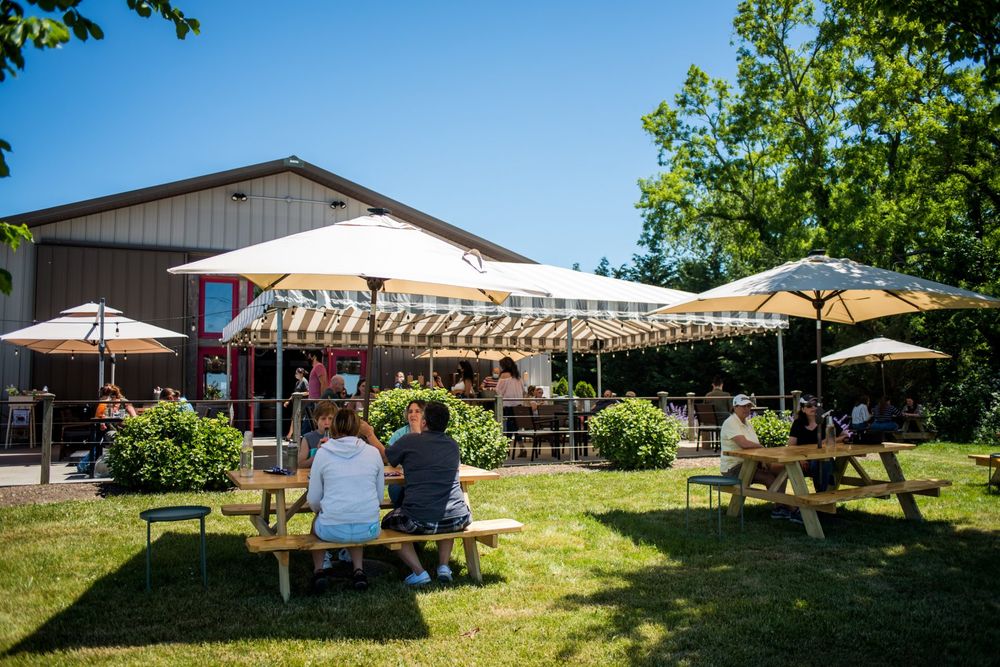
Lieb Cellars Estate Pinot Blanc (FOB $132 per 9 litre case)
Lieb Cellars Estate Sparkling Pinot Blanc (FOB $176 9 litre case)
Ravines Wine Cellars (Finger Lakes)
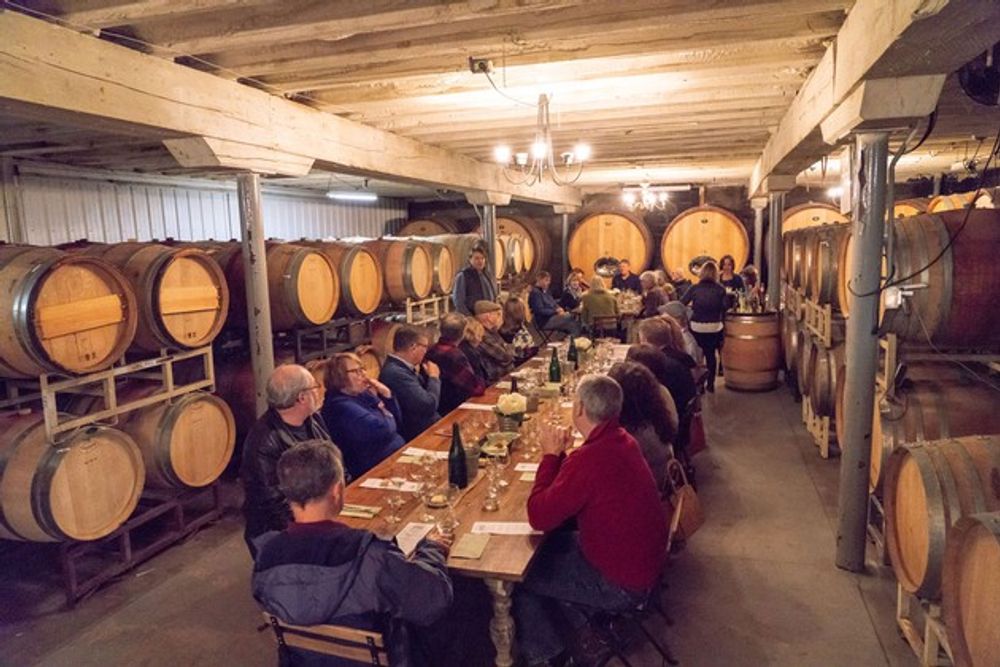
Ravines was started around 20 years ago by husband and wine Morten and Lisa Hallgren, a European winemaker and oenologist and chef, respectively, and looks to make “elegant and expressive wines using Old World winemaking practices” from dry vinifera grapes. It specialises in making dry, floral, mineral Rieslings and works with its own contracted growers from selected sites, but now has 85% of its own estate fruit from 125 acres across three sites chosen for their limestone and shale stone qualities which helps make a more “complex wine”. It uses extensive lees ageing and bottle ageing for a number of years before releasing. The winery is part of the Vine Balance 2 project in Finger Lakes to introduce a certified sustainable programme in the region. It works in 26 states in the US as well as Quebec, Denmark and Japan. It produces on average around 25,000 cases a year. The two wines tasted were:
Ravines Dry Riesling 2018 (FOB $109 9 litre case) (4-5000 cases)
Ravines Dry Riesling Agretsinger Vineyard 2017 (FOB $190 9 litre case) (500-1000 cases)
Mazza Chautauqua Cellars (Lake Erie)
Mazza Chautauqua Cellars is in the far western part of the state, or southern tier, and also runs a brewery and distillery business. The wine side has been running in New York since 2005 and it does not own it vineyards but is working with growers across the state, including Long Island and the Finger Lakes and Lake Erie – expressed in its Travelers Series that look to highlight the best of what the state can do. It is proud not only of its Italian heritage but also the fact its main winemaking team, including Mario Mazza, have trained and worked around the world – Mario having studied oenology at Adelaide University – which it believes has helped “elevate” its wines thanks to that worldwide experience. It’s looking to make fruit forward, bright wines with fresh acidity. Total production, including bulk and private label, is now over half a million gallons. Its two wines selected were:
Riesling, Nutt Road Vineyards (Seneca Lake) 2017 ($90 FOB 9 litre case)
The Perfect Rosé 2020 (FOB $70 9 litre case)
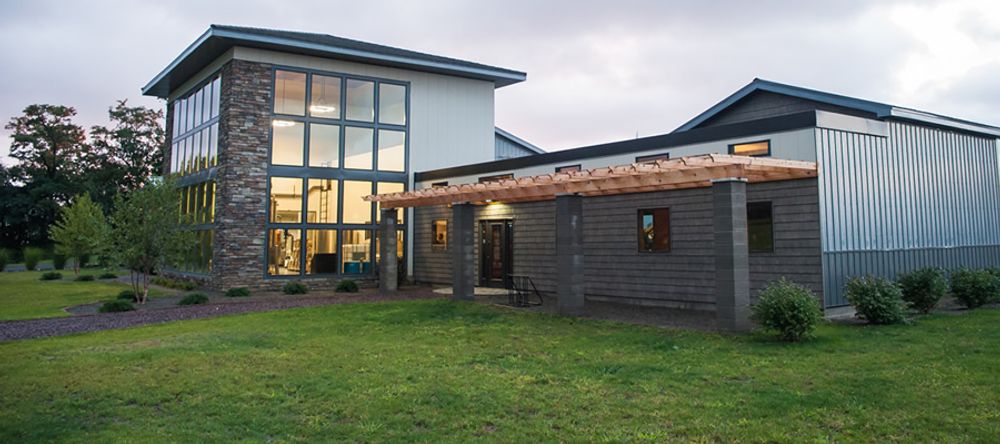
Hound’s Tree Wines (Long Island)
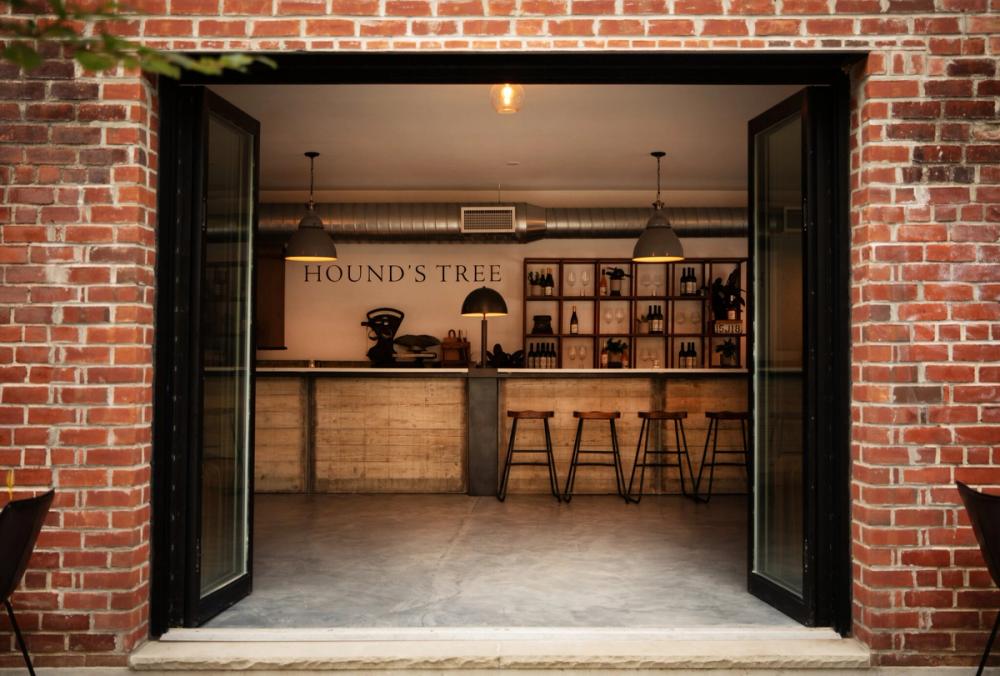
Located around two hours west of New York City, Hound’s Tree Wines first started making wine in 2015 and also enjoys a maritime climate being surrounded by water on the North Fork of Long Island which help to make fresh wines with purity and ripeness. Here the focus on its 12 hectare estate is on Bordeaux varieties, predominantly Cabernet Franc and Merlot, and Chardonnay with some plantings of Sauvignon Blanc and Pinot Blanc. Winemaker Alexander Rosanelli says he is looking to make “classic and restrained styles of Bordeaux variety reds and Chardonnay” but also using what he calls “measured exploration” low intervention and sustainable techniques in the winery, like a pet nat, skin contact style Cabernet. The key for him is with a variety like Cabernet Franc is to have a “lighter touch” and use whole cluster fermentations to bring out a more floral, classic Bordeaux style. Production is around 2,000 cases a year.
Its two wines at the tasting pitch were:
Hound’s Tree Wines Cabernet Franc 2017 (FOB $158 9 litre case)
Hound’s Tree Wines Petillant Naturel 2020 (70% Cabernet Sauvignon rosé juice, 30% skin fermented Muscat) (FOB $114 9 litre case)
Living Roots Wine & Co (Finger Lakes)
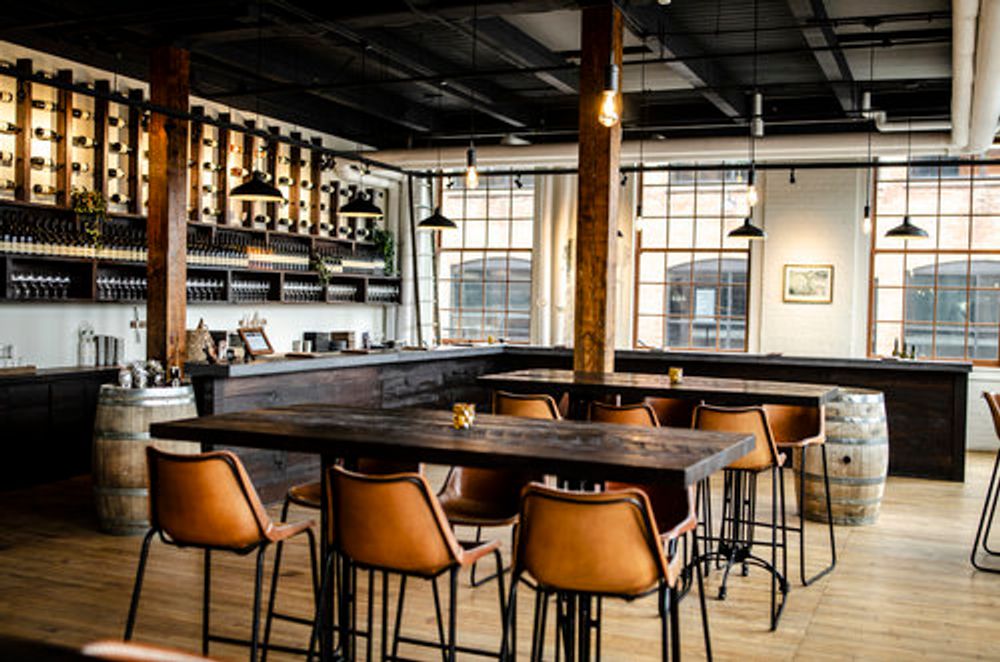
Living Roots Wine & Co describes itself as an urban winery based in Finger Lakes and also has a sister business in Adelaide Hills, Australia and is co-owned by Seb Hardy, of the Hardy’s Australian winemaking family, and Colleen Hardy, born and bred in New York, who met Seb whilst doing cellar work in Australia. They split their time, and harvests, in both countries and carry their winemaking influences with them concentrating on sparkling and aromatic whites in the Finger Lakes. It focuses on making high quality wines through using low intervention techniques, like wild ferments, carbonic maceration, and experimenting with hybrid blends. It buys grapes from local growers and their respective family businesses including Coleen’s Shale Creek Vineyard in Keuka Lake. It specialises in making sparkling wine and Rieslings across different styles be it traditional method, bone dry, late harvest and pet nat. It currently exports to Canada and Australia.
The wines shown were:
Living Roots Wine Finger Lakes Session 2019 (FOB $9 per bottle)
Living Roots Wine Egresi Riesling Pétillant Naturel 2020 (FOB $9 per bottle)
Wagner Vineyards (Seneca Lake, Finger Lakes)
The Wagner family has been making wines next to the east side of the Seneca Lake – part of Finger Lakes – for over 100 years. Here the influence of the Seneca Lake can be found in its wines as it is situated alongside its deepest point – 640 feet down – where it gets longer sun exposure during the afternoon and is hit by north west prevailing winds that helps to warm up the vines slightly in the long hard winter and then cools them down in the summer. All of which helps to make its elegant, fresh, aromatic wines. It uses grapes from half its 97 hectares of vines for its own wines and sells the rest to 30 wineries. It works with 20 varieties, of which seven are vinifera and 13 are US and hybrids. It has the biggest plantings of Riesling in the region (25 hectares), including four different clones and at different elevations on multiple soil types and different ages including the original 43 year old plot of eight hectares. Its Cabernet Franc plantings have gone from 5 acres in 1997 to 28 acres now. It is also part of the Finger Lakes Vine Balance 2 sustainability test programme. Its aim is to make great quality, but also value wines. It exports a little to Canada and Peru.
Its two wines shown were:
Wagner Vineyards Cabernet Franc 2019 (FOB $96 12 bottle case)
Wagner Vineyards Dry Riesling 2020 (FOB $84 12 bottle case)
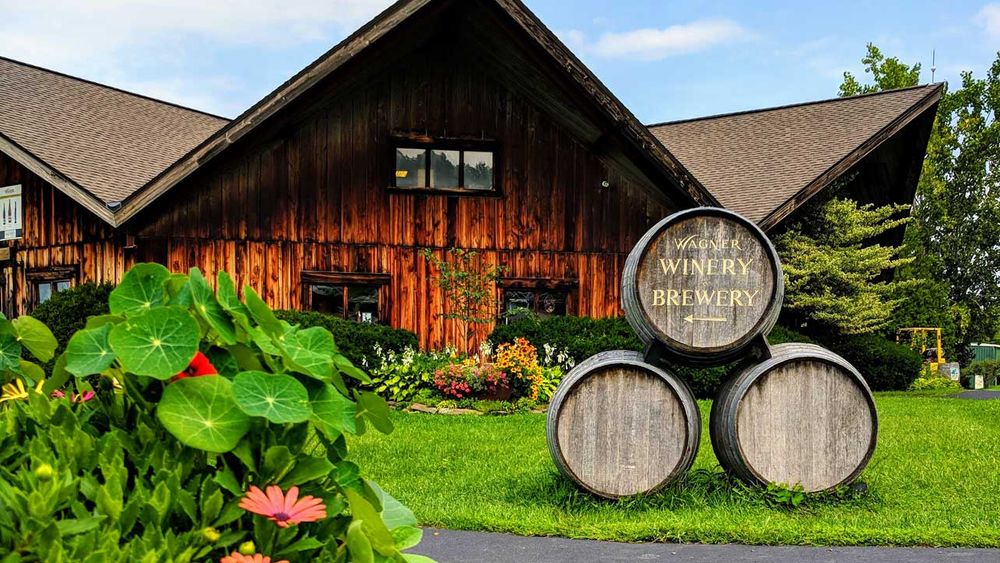
Four Maples Vineyard (Champlain Valley)
Four Maples Vineyard, which started in 2011, is situated close to the Canadian border at the far north end of New York State alongside Lake Champlain which again helps to moderate the temperatures and protect the vines from the harsh winters, in what is one of the youngest AVAs in the state. It has eight acres of vines planted on gravel, clay and limestone soils and is using mainly Nordic varieties including Marquette and Frontenac for the reds and La Crescent, St-Pepin and Itasca for the whites. Here the focus is on producing aged wines and it only started marketing its wines in 2019. It has been building its distribution in New York and has now started its own tasting room and cellar experience.
Wine shown was:
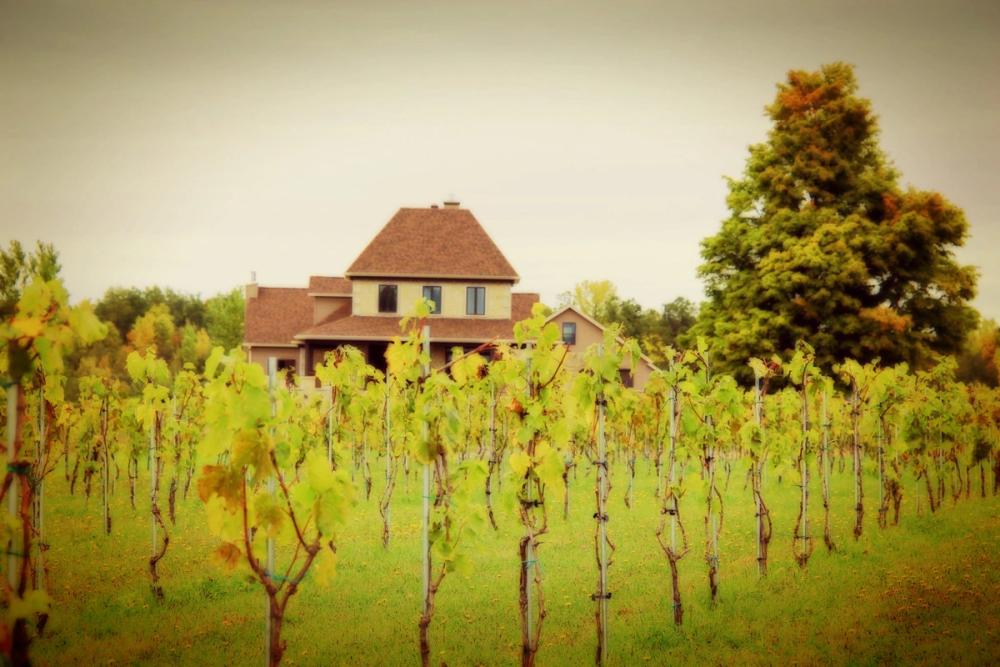
(FOB price is $130 per case)
Four Maples Cuvée du Pétit 2017
Brotherhood Winery (Long Island)
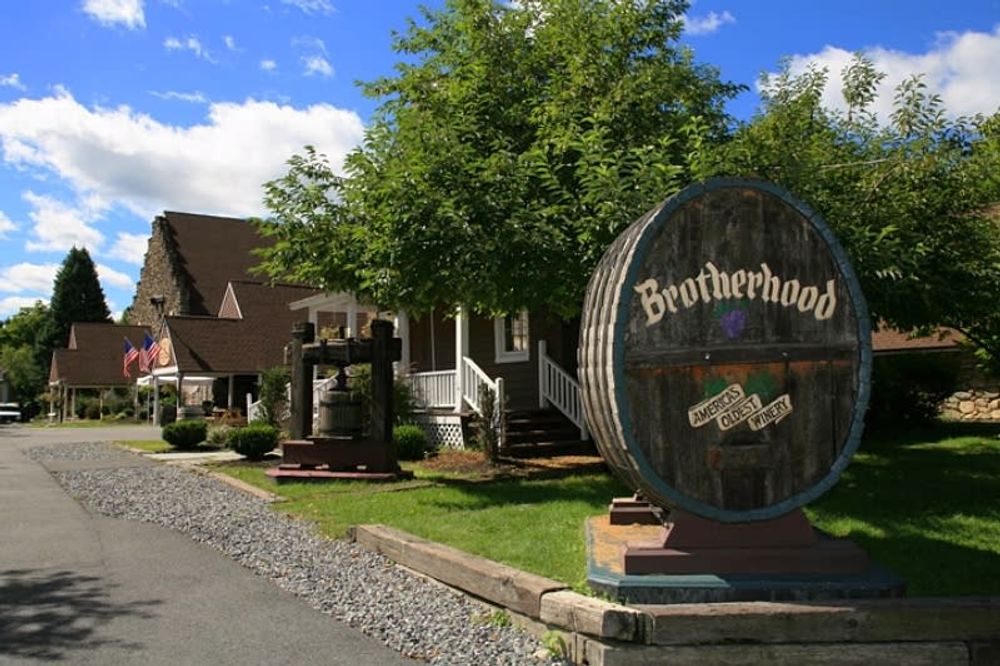
The Brotherhood Winery is one of the oldest wineries in the United States dating back to 1839 when it made its first commercial release and was even able to operate through Prohibition. It was one of the first producers to introduce French hybrids to the US and in the 1980s introduced vitis viniefra by the prominent Chilean winemaker, Cesar Baeza. Its main production today is centred around Cabernet Sauvignon, Pinot Noir, Merlot and Chardonnay. It has gone through a major redevelopment programme to keep its wines at the quality end of the New York region and has had winemaker Rob Barrow at the helm since 1999. It produces a wide range of reds, whites, rosés and Méthode Champenoise sparkling wine.
Wines tasted included
(FOB Pricing $84 per case for 12 x 75cl case)
Brotherhood Cabernet Sauvignon 2017
Brotherhood Merlot 2017
Pre-Pitch: Buyers’ initial perceptions
To help set the scene the UK buyers initially gave their initial perceptions of New York State wine.
(Click here for Wanderlust Wine’s Richard Ellison on the unanimous positive response he has had to wines from New York State)
Richard Ellison at Wanderlust Wine is already a big supporter and believer in New York State wines and is currently importing Channing Daughters from Long Island and Hermann J. Wiemer Vineyards in Finger Lakes. He says he was taken by the Channing Daughters “experimental, modern style” of wines with “skin contact Pinot Grigio and pet nats and different varietals” whereas he is able to get Germanic-style Rieslings from Hermann J Wiemer.
But he admits when he first bought from New York he was a “little cautious about what the reception might be” amongst his UK customers compared to the confidence he had when starting the business and basing so much of his initial list on premium wines from California.
“I think overall the reception from both trade and consumers has been overwhelmingly positive and interested in a region they know very little about,” he explains.
Whereas California immediately conjures up memories and images of Californian sunshine and holidays and driving up the Pacific Coast Highway, when people think of New York they only think of the city, certainly not the fact it also makes wine or which varieties grow there.
But he also sees that as a positive in that people are interested to know what New York can offer them in terms of premium wine and certainly. Which is why he has deliberately chosen two producers that have very different, but also very clear and simple stories to tell.
“Stylistically both have been very successful and people love the wines. There’s been unanimous positivity for them,” he says.
Ellison says the interesting thing about sourcing wine is that buyers all have very different things you are looking for, from the style of the wine, the price point through to image and story and the good news for New York is that it has all those to offer.
Miranda Wong at Graft Wine says its has not yet taken any wines from New York State, but is very interested in what it has to offer, providing they can work with US shipping costs and the UK’s tough duty regime.
“When I think of New York, I think of two ends of the wine spectrum: the traditional, off dry Riesling-style producers and then slightly more new wave producers focusing on new expressions of traditional varieties and cool climate varieties and playing a little bit with pet nat. I feel it is a wide open industry for us to look at.”
But she agrees with Ellison that it is still very much a “new region” for most of its customers and “people don’t know what to expect” particularly from its red wines.
Looking for right partner
Rebecca Palmer says Corney & Barrow is also yet to venture into New York State, but is keen to do so if they can find the right partner to work with as they have enjoyed and had good success with producers in California and Oregon. “New York is certainly on my radar and it is an interesting area and we certainly have demand for more wines from the US.”
Corinne O’Connor at Propeller says East Coast wines in general are not well known in the UK, but there is very much an interest to find out more. New York State producers certainly fit the bill when it comes to what Propeller is looking for – namely producers that have not worked in the UK before and are looking for a new route to mareket, which is what Propeller can hopefully provide.
“As the East Coast is producing better and better wines, the UK is a desirable market to be and people here have a desire to try wines from lots of esoteric and up and coming regions. I think there is a real place in the market for them [New York wines] and to be successful,” she says.
Bastien Martinole at Fine Wines Direct UK admits New York State and its wines is a new region for him and the business, which is why he was so keen to take part in the session. He was also taken by the number of varieties being grown in the area, and the focus on natural and low intervention winemaking. “It’s an interesting and upcoming region for sure,” he adds.
Post Pitch: How the buyers responded
(Click below for Graft Wine’s Miranda Fong: wine styles she thinks have the most potential from New York State)
The buyers were then invited to share their overall thoughts on the wines they had the chance to taste and where they might sit in the UK market.
Rebecca Palmer at Corney & Barrow certainly thinks there is strong potential for some of the styles: “I really think some of them have potential for the UK market in that lower to mid premium sector. I was actually impressed by the pricing as well.”
What particularly struck her was the “breadth and variety” of wines to taste. “What I really, really like is the freshness and drinkability of absolutely all the wines here. You have got the really classically built and structured wines and then you have got the more experimental styles, but when you have looked to break the rules you have broken them well. An awful lot of people out there who call their wines natural or pet nat are not doing that.”
Highlights for Palmer included some of the Cabernet Francs, the dry Rieslings and some of the pet nats. “I’m impressed.”
Elly Owen at The Old Garage says she was also “really impressed with the variety of wines and the different styles that were put together”. She adds: “I wrongly assumed that most would be white so it was interesting to see the reds. The wines represented a great cross section I was particularly impressed with the overall quality but a few stood out as quite exceptional, I loved the concept of the Living Roots wines, and the red from Hounds Tree were fantastic. So drinkable with great fruit structure.
“I think the pet nats are a great idea and would easily fit into the growing natural wines movement and with people getting more curious about these wines.”
Miranda Fong was also impressed by the range and variety of pet nat, low intervention and orange wines the producers had to show as that is very much what the UK market is looking for. “We have added quite a few in the last year and there still never seems to be quite enough. It’s nice to see a region like New York, that is quite new to our portfolio, having that sort of offering as a lot of customers would not think of that when they think of New York.” She was also really pleased to see the level of bottle age going on with New York Rieslings and thought some of the styles “were quite unique” in what they were offering and offered a “really appealing” alternative to what she can usually only really find in Germany.
The cool climate reds were also interesting to taste, she adds, particularly as they are showing such low levels of alcohol, but keeping the freshness and fruit purity at the same time.
(Click below for Propeller’s Corinne O’Connor: UK independent merchants are a great market for New York wines)
Corinne O’Connor at Propeller says producers from New York State are hitting the UK market at the right time as buyers across the premium on and off-trades have not had chance to see very much that is new for the last couple of years due to the pandemic.
“The indie market here is begging for new and interesting things and that is coming directly from their consumers,” she says. “I am pretty impressed by the overall quality and variety of styles of wine that I tasted today and I think a lot of them could work in our market.”
O’Connor could see a place in the UK for both the more traditional drier Riesling styles, but also the “cool, funky, natural” stuff too. “People of my generation are begging for that kind of stuff. That is just the kind of wine they want to drink,” she adds. “I think there is a lot of room in the sandbox for everybody.”
Richard Ellison at Wanderlust Wine was also really taken with the quality of the wines on show and picked out the Living Roots pet nat in particular as a style of wine that is “going to do well in the UK with the right importer and to the right demographic”. He also liked the Living Roots and Lieb wines packaging.
The dry Rieslings also hit the mark for Ellison, particularly the classic and aged styles and the “purity of fruit” on the Cabernet Francs.
He was less certain about rosés from New York – and in the US in general – purely on the cost basis compared to the bone dry, value styles still coming out of Provence.
Ellison also threw out a warning to the New York wineries just starting out on exporting that their FOB price needs to include transportation to the port to be shipped. Not for the UK importer to go and pick it up. “That sometimes gets mixed up in the wash,” he says.
Owen says a good price point for New York to hit would be wines on the shelf for £15-£22.
Balancing act
Bastien Martinole and the team at Fine Wines Direct UK also “really enjoyed the tasting and the variety of styles” they were able to taste. But also said it can be a little difficult for what might be perceived as a new region for many of its restaurant customers to really understand what New York’s biggest calling cards are because there is such a diversity of choice.
“They will sit on the wine list and compete with wines that are really well established in their regions and grape varieties and I can see that as a challenge,” he explains.
If they were to select a wine or two then they would be more likely to go down the traditional route and find a classic style of Riesling, or Cabernet Franc, to work with “which would be easier for the customer to pick and identify”.
The panel could see the benefits and disadvantages of having niche wines from what is still an up and coming region. On the hand it is exciting and different and appeals to those looking for those sort of wines, but you need to make sure you have the right importer that can really “hand sell” your wines in what is such a competitive market, says Palmer.
Elly Owen agrees: “I think there is always a market for interesting wines with a story but just how transferable they are in different situations can be a challenge.”
But overall the producers pitches went down very well: “I would definitely be inclined to look for more wines from this area. I really thought the diversity was great and tasting wines from hybrids was really cool. The region looks like it has some great things to offer and I was really impressed.”
- You can read Part 2 of our report later in the week.
- For any more information on New York Wine & Grape Foundation and its wines go to its website here.





